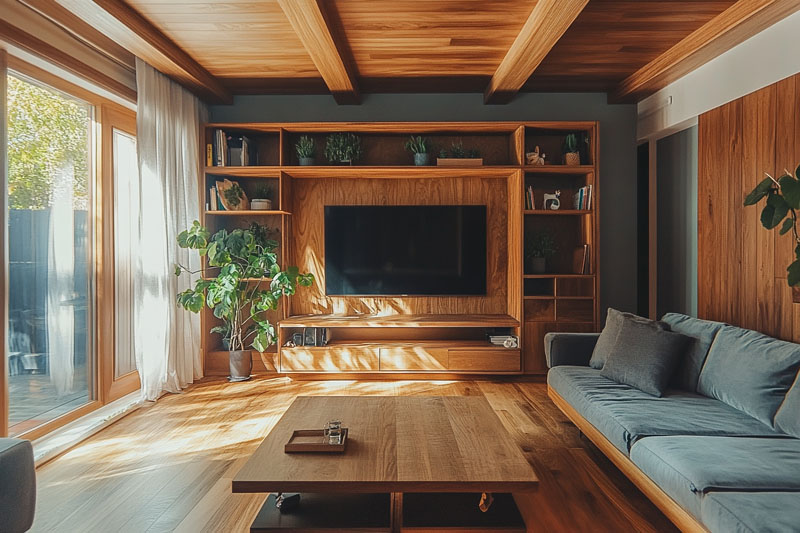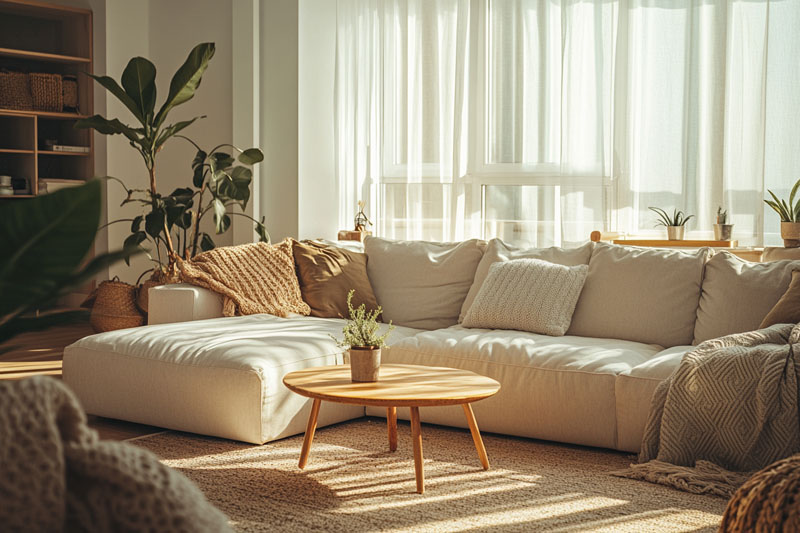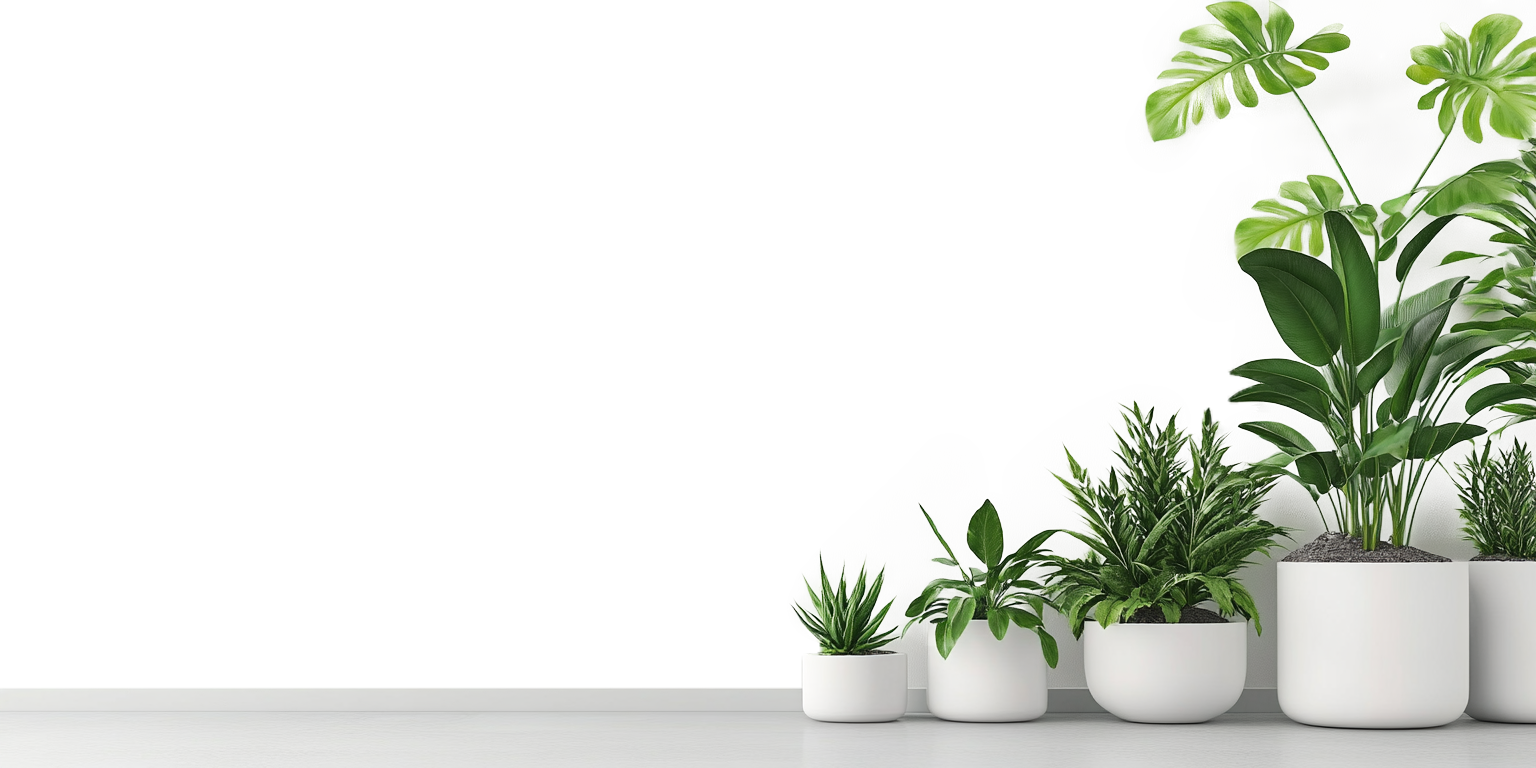Top 10 Ways to Go Green: Sustainable and Eco-Friendly Decor Ideas for Indian Homes

Transform Your Indian Home into a Sustainable Oasis with These Practical Decor Tips
In an age where environmental concerns are at the forefront of global discussions, adopting sustainable practices at home has never been more important. Indian homes, with their rich cultural heritage and diversity, offer a unique canvas for integrating eco-friendly decor. Embracing sustainability doesn’t mean compromising on style or comfort; instead, it enhances the living experience by creating spaces that are not only beautiful but also kind to the planet.
Here are the top 10 sustainable and eco-friendly decor ideas to transform your Indian home into a haven of green living.
1. Upcycle and Repurpose Old Items
Giving new life to old possessions reduces waste and adds character to your home.
Upcycling is the art of transforming discarded or unused items into something valuable and functional. In Indian households, it’s common to find old furniture, textiles, and artifacts that hold sentimental value. Instead of discarding them, consider repurposing these items.
•Furniture Makeovers: An old wooden door can become a rustic dining table. Vintage trunks can be converted into coffee tables or storage benches.
•Textile Transformation: Old sarees with intricate designs can be turned into cushion covers, curtains, or wall hangings.
•Creative Displays: Use antique kitchen utensils as decorative pieces or planters.
By upcycling, you not only reduce waste but also create unique decor pieces that tell a story and reflect your personal style.
2. Incorporate Indoor Plants
Plants improve air quality and bring a touch of nature indoors.
Indoor plants are more than just decorative elements; they contribute to a healthier living environment by purifying the air and boosting oxygen levels. They also add a sense of tranquility and freshness to your home.
•Suitable Plants for Indian Homes:
•Snake Plant (Sansevieria): Known for its air-purifying qualities and low maintenance.
•Money Plant (Epipremnum aureum): Believed to bring prosperity; thrives in various light conditions.
•Areca Palm: Adds a tropical feel and is effective in removing indoor air pollutants.
•Vertical Gardens: If space is limited, consider creating a vertical garden using wall-mounted planters or hanging pots. This not only saves space but also creates a striking visual impact.
•Maintenance Tips:
•Ensure proper sunlight according to each plant’s needs.
•Use organic fertilizers and pesticides.
•Regularly clean the leaves to facilitate photosynthesis.
Integrating plants into your decor promotes well-being and connects your indoor space with nature.

3. Use Natural and Sustainable Materials
Opting for materials like bamboo, jute, and cane supports sustainability and adds a natural aesthetic.
Natural materials are renewable, biodegradable, and often require less energy to produce compared to synthetic alternatives.
•Bamboo: A fast-growing grass that’s strong and versatile. Use bamboo for flooring, furniture, or decorative items like lamp shades and wall panels.
•Jute and Sisal: These natural fibers are perfect for rugs, mats, and storage baskets. They add texture and warmth to a room.
•Cane Furniture: Lightweight and durable, cane furniture is ideal for creating a relaxed and airy atmosphere, especially in living rooms and verandas.
•Terracotta: Incorporate terracotta pots, tiles, and decor items. Terracotta adds an earthy charm and is deeply rooted in Indian tradition.
Using these materials supports eco-friendly practices and often benefits local artisans who craft these items.
4. Energy-Efficient Lighting
Reducing energy consumption with efficient lighting solutions is beneficial for both the environment and your utility bills.
Lighting plays a crucial role in home decor, influencing the ambiance and functionality of spaces.
•LED Lighting: LEDs consume significantly less energy and have a longer lifespan compared to traditional incandescent bulbs.
•Natural Lighting: Maximize the use of natural light by:
•Installing large windows or skylights.
•Using light-colored curtains that allow sunlight to filter through.
•Placing mirrors strategically to reflect light and brighten spaces.
•Solar Lighting: For outdoor areas like gardens or balconies, consider solar-powered lights. They harness renewable energy and are cost-effective in the long run.
By adopting energy-efficient lighting, you contribute to reducing greenhouse gas emissions and promote sustainable energy use.
5. Support Local Artisans and Crafts
Purchasing locally made products reduces carbon footprint and preserves cultural heritage.
India is home to a vast array of traditional crafts, each region offering unique art forms.
•Handicrafts to Consider:
•Madhubani Paintings from Bihar: Use them as wall art to add color and cultural depth.
•Blue Pottery from Jaipur: Incorporate decorative items like vases, plates, and tiles.
•Warli Art from Maharashtra: Use these tribal paintings for a minimalist and earthy decor theme.
•Textiles: Support local weavers by choosing handloom fabrics for upholstery, curtains, and bed linens. Fabrics like Khadi and Ikat are not only sustainable but also add elegance to your home.
By choosing locally crafted items, you help sustain traditional crafts and reduce the environmental impact associated with mass production and long-distance shipping.
6. Opt for Eco-Friendly Paints and Finishes
Low-VOC paints improve indoor air quality and are safer for your family and the environment.
Conventional paints often contain volatile organic compounds (VOCs) that release harmful gases over time.
•Low-VOC and No-VOC Paints: These paints emit fewer toxins and are available in a variety of colors and finishes.
•Natural Paints: Made from natural ingredients like clay, lime, and natural pigments. They offer a unique aesthetic and are entirely biodegradable.
•Finishes and Sealants: Use water-based varnishes and sealants instead of solvent-based ones for finishing woodwork.
Choosing eco-friendly paints reduces indoor pollution and contributes to a healthier living space.
7. Implement Water Conservation Features
Water-saving measures are essential in a country where water scarcity is a growing concern.
Water conservation is not just an environmental necessity but also a responsible practice.
•Low-Flow Fixtures:
•Aerated Faucets: Mix air with water to reduce flow without affecting pressure.
•Dual-Flush Toilets: Offer two flush options for liquid and solid waste, conserving water with each use.
•Water-Efficient Showerheads: Reduce water usage without compromising on the shower experience.
•Rainwater Harvesting: Collect rainwater for gardening and cleaning purposes. Simple systems can be installed to channel rainwater from rooftops into storage tanks.
•Greywater Recycling: Reuse water from sinks and showers for irrigation after minimal treatment.
Incorporating these features conserves water resources and can reduce utility bills.
8. Choose Multi-Functional and Minimalist Furniture
Less furniture means less consumption, and multi-functional pieces maximize space and utility.
Adopting a minimalist approach reduces clutter and focuses on essential items that serve multiple purposes.
•Multi-Functional Furniture Examples:
•Sofa Beds: Ideal for homes with limited space, serving as seating by day and a bed by night.
•Storage Ottomans: Provide seating and hidden storage for blankets, magazines, or toys.
•Expandable Dining Tables: Adjust size according to the number of guests, saving space when not in use.
•Quality Over Quantity: Invest in high-quality furniture made from sustainable materials like certified wood. Durable furniture lasts longer, reducing the need for frequent replacements.
Minimalism promotes mindful consumption and creates a spacious, serene living environment.
9. Use Organic and Sustainable Textiles
Organic textiles are free from harmful chemicals and support sustainable farming practices.
Textiles play a significant role in home decor, from curtains and rugs to bed linens and upholstery.
•Organic Fabrics:
•Organic Cotton: Grown without synthetic pesticides, it’s soft and ideal for bedding and towels.
•Linen: Made from flax, it’s durable and has a natural luster, suitable for curtains and upholstery.
•Hemp: Strong and resistant to mold, hemp fabric is excellent for rugs and heavy-duty upholstery.
•Natural Dyes: Choose textiles dyed with natural substances derived from plants, minerals, and insects. They are less polluting and often have unique, rich hues.
Using organic textiles reduces exposure to toxins and supports environmentally friendly agriculture.
10. Decorate with Recycled and Reclaimed Materials
Incorporating recycled materials reduces waste and adds uniqueness to your decor.
Decor made from recycled materials often has a distinct character and story behind it.
•Recycled Glass and Metal: Use decorative items made from recycled glass, such as vases, candle holders, or mosaic tiles. Metal scraps can be transformed into sculptures or wall art.
•Reclaimed Wood: Wood salvaged from old buildings or furniture can be used for flooring, wall paneling, or crafting new furniture pieces. Reclaimed wood adds warmth and history to your home.
•Art from Waste: Create or purchase art pieces made from discarded materials like plastic bottles, newspapers, or fabric scraps.
By choosing recycled decor, you contribute to waste reduction and promote sustainable consumption patterns.

Embracing a Sustainable Lifestyle: Your Home as a Catalyst for Positive Change
Transforming your home into a sustainable and eco-friendly space is a rewarding endeavor that benefits both you and the environment. These decor ideas not only enhance the aesthetic appeal of your home but also promote a healthier and more conscious way of living.
By upcycling old items, incorporating plants, using natural materials, and supporting local artisans, you create a home that reflects your values and contributes to a more sustainable future. Energy-efficient lighting, water conservation measures, and the use of eco-friendly paints further reduce your environmental footprint.
Embracing sustainability in home decor is about making mindful choices that have a positive impact. It’s about appreciating the beauty of natural materials, the craftsmanship of local artisans, and the tranquility that comes from living in harmony with nature.
As you implement these ideas, you’ll find that sustainable living enriches your life in unexpected ways, fostering a deeper connection with your surroundings and a sense of fulfillment from contributing to the well-being of the planet.
By integrating these sustainable decor ideas, you’re not just updating your home; you’re making a meaningful difference. Every small step counts, and collectively, our actions can lead to significant positive change. Let’s embrace sustainability, not just as a trend, but as a way of life that honors the environment and preserves it for future generations.
Founded with the belief that homes should be personal, livable, and elegant, Galliard Studio is an interior design firm specializing in Scandinavian and modern minimalism. Based in India, we’re committed to bringing you stunning yet affordable homes that reflect your taste and lifestyle. Our team of designers and craftsmen ensure that every project is executed with precision, attention to detail, and a commitment to your vision.

About | Privacy Policies | Galliard Games | Townside
